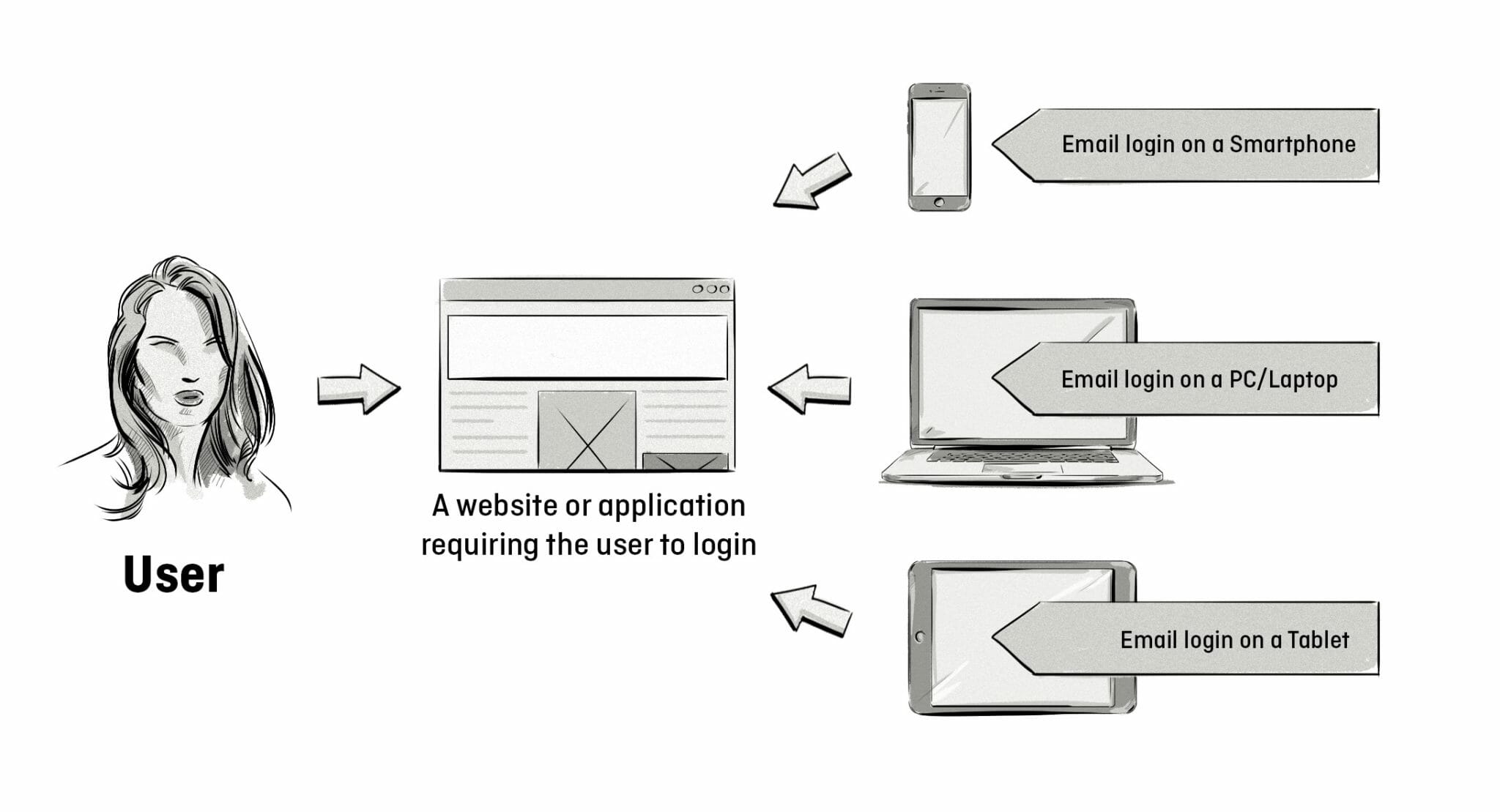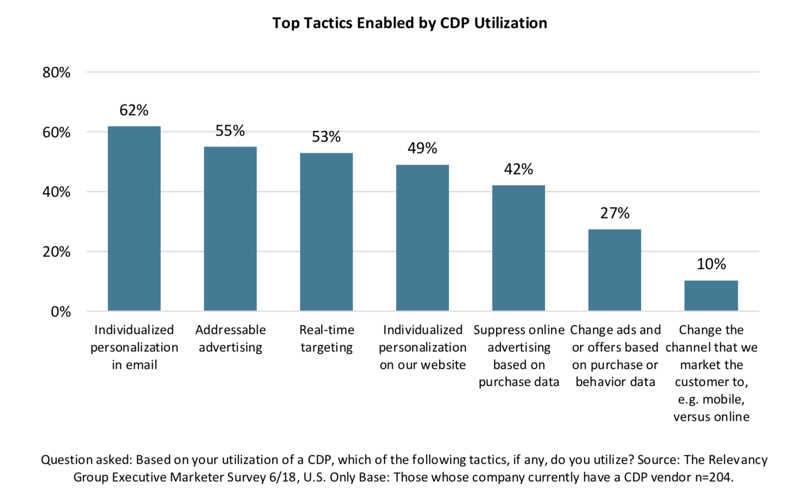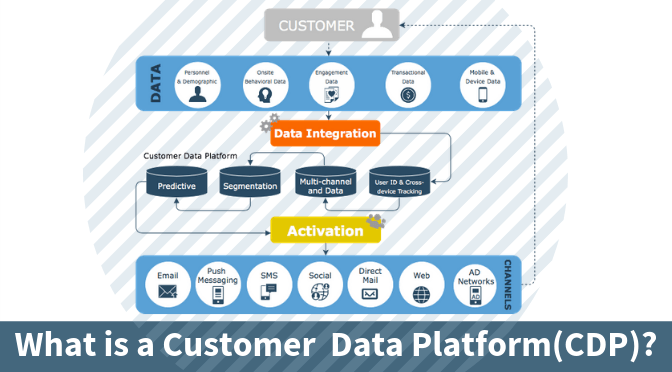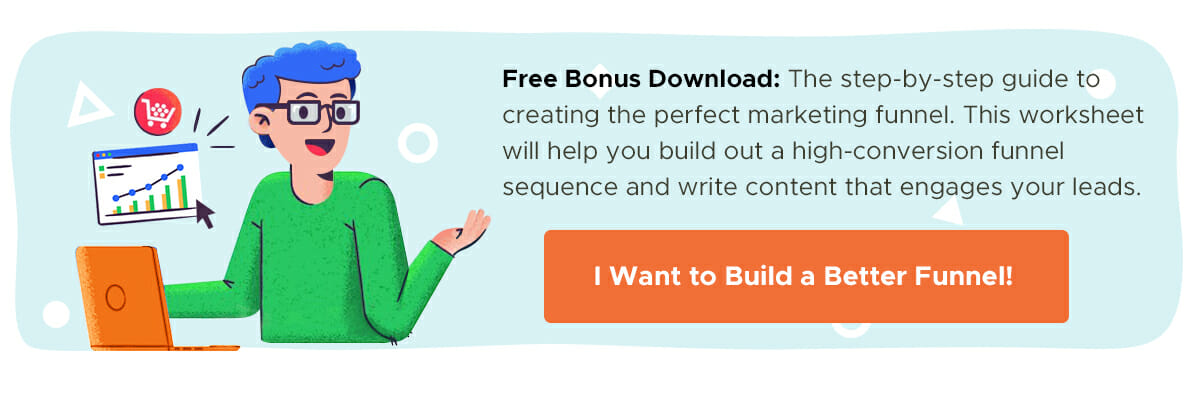When management expert Peter Drucker first spoke the words “What gets measured, gets managed,” the idea was that the more you know about your business (and ultimately your customers), the better positioned you’ll be.
But marketers back then didn’t have the fancy data collection methods we have today. They were limited to what they knew about their audience and the payoff of their campaigns. As a result, they were also limited to what and how much they could manage.
Fast forward to today, where data measurement and management issues for businesses don’t stem from a lack of data, but, rather, from having too much information to make sense of.
Sure, customer relationship management (CRM) programs and similar tools have made it easier to tap into company data and can even help you connect the dots on what it all means, but there are still gaping holes, especially for marketing teams that need better insight into customer journeys, not just sales figures and funnels.
Customer data platforms (CDPs) seek to fill in the gaps left behind other data-rich systems — not as a replacement, but in cooperation so that sales and marketing can finally align.
What Is a Customer Data Platform?
A customer data platform (CDP) is to marketing what a CRM is to sales — it’s everything.
By definition from the CDP Institute, a customer data platform is “a packaged software that creates a persistent, unified customer database that is accessible to other systems.”
CDPs give marketing teams a unified, in-depth look at their customers’ behaviors, needs and mindsets. They aggregate and sort customer data from various touchpoints such as your CRM, email marketing and website activity to give you a holistic view of your sales and marketing.
Dive Deeper: Top 8 Tools to Improve Customer Experience Using Heat Maps, Feedback and Links
What Type of Customer Data Does a CDP Collect?
![]()
Though fairly new and seemingly mysterious, CDPs are already making a noticeable impact in marketing departments. Data has become so critical to business operations that companies are vying to soak up every little piece of information they can, provided it’s A) useful and B) easily understood.
Marketers have long sought a 360-degree view of their customers, and the information collected by CDPs brings companies closer to this goal. Not all companies will collect the same information, but most will draw on the four following buckets of data:
1) Identity-Related Data
Customer identity is the foundation of a CDP profile. This allows businesses to identify unique customers and eliminate potential duplications.
This type of data includes the customer’s name, address, email address, phone number, age, gender, user IDs and social media profile links, among other items.
2) Behavior-Related Data
Behavioral or quantitative data allows a business to understand how customers are engaging with the company. This usually occurs through a collection of transactional information, communications or online engagements.
Companies can track the types of products that each customer is buying, what they return, shopping cart abandonment, order frequency and purchase size. Each time they visit your website, their browsing history and time spent on your site are logged. Email open rates, clicks and replies are also collected and measured for use in eventual analysis.
3) Qualitative Data
This layer provides more context to your customer profiles. Asking a customer what made them purchase or how they’d rate a product gives you greater insight into their motivations and overall satisfaction with your product/service.
4) Personality-Related Data
This is perhaps the most diverse set of data that CDPs can provide and will vary depending on your company’s goals. Personality-related data describes your customer or their behaviors in detail, including job history, family size, whether they have a gym membership, how often they eat out, and much more.
How Does a Customer Data Platform Work?
Customer data platforms work largely from algorithms. Once you implement your CDP, it will start collecting information about your customers, relying on pieces of data that are unique to each user, such as an email address or phone number. It then combines all data that’s related to that user into a single, detailed profile. This method is also known as deterministic matching and is about 80-90% accurate:

The high accuracy of this method allows the CDP to create continually evolving customer profiles. Information is collected and updated in real time so you always have the most recent information available. The more that each user engages with your brand, the more complete the profile becomes.
The CDP continues to aggregate data and compares customer profiles to find similarities among your audience in order to inform future sales, marketing and advertising campaigns. You can also use this data to create lookalike audiences on platforms like Facebook Ads.
Dive Deeper:
How Are CDPs Different from Other Data Management Products?
Full disclosure: There’s a bit of overlap between customer data platforms (CDPs) and products like customer relationship management (CRM) software and data management platforms (DMPs).
However, a CDP is its own product with a completely unique functionality; it isn’t intended to replace a CRM or DMP.
CDP vs CRM
Both technologies collect customer data and add value to your sales and marketing, but that’s where the similarities end.
CRMs focus on intentional customer data and interactions. For example, if a customer calls a salesperson, the team member will have to manually enter the call into the CRM software (unless it has automated tracking built in). CRM systems were built to engage with customers, not just work behind the scenes. They collect general customer data, rather than larger data sets from multiple touchpoints.
A CDP is a tool designed specifically for marketing purposes. It works completely anonymously and autonomously, collecting data on customers that wouldn’t be found in your CRM system. The CDP focuses on the lifecycle of customer actions, while CRMs are usually used for sales funnels and forecasting.
Perhaps most notable is that CDPs collect offline data, whereas CRMs cannot retrieve offline data unless someone manually enters it. For example, data from a point-of-sale system can be loaded into the CDP for a broader customer profile in a way that likely wouldn’t be available to a CRM.
CDP vs DMP
By definition, a data management platform collects, sorts and analyzes customer and ad campaign data from multiple sources. Its main purpose is to help businesses learn more about their customer demographics and buying triggers. On the surface, DMPs sound a lot like CDPs, but there are a few distinct differences.
DMPs focus on anonymous data, such as devices, cookies and IP addresses. Rather than attaching its data stores to specific individuals, DMPs look at general behaviors, rather than customer-specific actions.
While CDPs are concerned with marketing, DMP data is mostly used in advertising (such as finding better ways to target ads). DMP data comes mostly from third-party sources — such as data companies — while CDP data is collected via the company’s own user base.
The shelf life of the data that each system collects varies as well. One of the biggest advantages of a CDP is that it gets more powerful as it collects more data. DMPs, however, store data for a short period before it “expires.” This is because audiences and ad targeting are ever-changing, which means that data can quickly become outdated.
How Do You Use a Customer Data Platform in Your Marketing?

Customer data platforms are built specifically for marketers. While CRM systems have typically been a go-to source for marketers, they fall short when it comes to tracking and analyzing deeper-level customer data that leads to smart targeted ad messaging.
As customer experience best practices shift to an omnichannel approach, marketing departments need a way to keep up with the multi-touchpoint experiences that customers expect.
Here are a few ways that companies are using CDPs to improve their marketing efforts:
Increase Customer Loyalty via Personalization
It’s still early to determine the full impact of using customer data platforms, but a survey of 400 marketers that use them found that 44% believe it helps to fuel customer loyalty.
A study by The Relevancy Group discovered that 62% of companies use their CDP to create personalization in email marketing, while 53% of users leverage it for real-time targeting:

There’s been ongoing research into the effects of personalization in marketing, and including a CDP into the mix only makes that personalization more effective.
Loyalty becomes a natural byproduct when personalization is at its peak. Click To Tweet
By providing product recommendations and offers that your users actually care about, you’re treating customers as friends, rather than transactions. It’s hard for them to walk away from that kind of customized treatment.
Dive Deeper:
Create New Audiences via Facebook
Facebook’s advertising platform allows you to create custom audiences, and its features are pretty powerful on their own. In some instances, new customer acquisition costs have dropped by as much as 73% for businesses using the custom audience feature.
CDPs enable you to use this feature even more effectively by segmenting customers based on your own data, not just Facebook’s. Because your lookalike audiences will be based on the real behaviors that you’ve collected in real-time, you’ll always have the latest, most accurate information available for your targeting.
Dive Deeper: Segmentation 101: A Strategist’s Complete Guide to Marketing Segmentation
Retarget Customers More Effectively
Retargeting offers one of the highest ROIs in online advertising. Click To Tweet
It’s easy to employ, relatively inexpensive and usually gets more response than other campaigns. But most companies try to tackle retargeting at scale, and are largely ineffective as a result.
This is because their retargeting campaigns continue to present the same offer to the same customer — even if the customer has made the purchase. This results in wasted ad dollars and a negative customer experience that could make customers wary of buying from the company again.
In the same study from The Relevancy Group, 42% of marketers with CDPs say they use it to remove targeted ads after a purchase, while 27% change their ads based on buying triggers. This not only removes redundancy for the customer, but also conserves the media budget for future campaigns.
Dive Deeper: Retargeting 101: Why It’s Essential for Any Marketing Funnel
Leverage Metrics
CDP data comes straight from the most important source — your customers. By collecting first-party data, you can take a more confident and informed approach to your marketing.
CDP uses pixels and other tracking tools behind the scenes. Once you implement these tools, you can sit back and relax knowing that your system is hard at work and retrieving the most relevant information for you in real-time.
What Does the Future Hold for CDPs?
Compared to other data technology like CRMs and DMPs, customer data platforms are still in their infancy. But that newness doesn’t make them any less powerful. In fact, the CDP Institute expects the industry to reach $1 billion by the end of this year as more companies prepare to adopt them.
The real value that CDPs offer goes beyond analytics. It’s about getting to know your customers at a personal level. As CDP technology grows, both in usage and sophistication, it will be interesting to see exactly how much these systems up the ante for companies as they compete on customer experience. No matter the outcome, the customer always wins.

